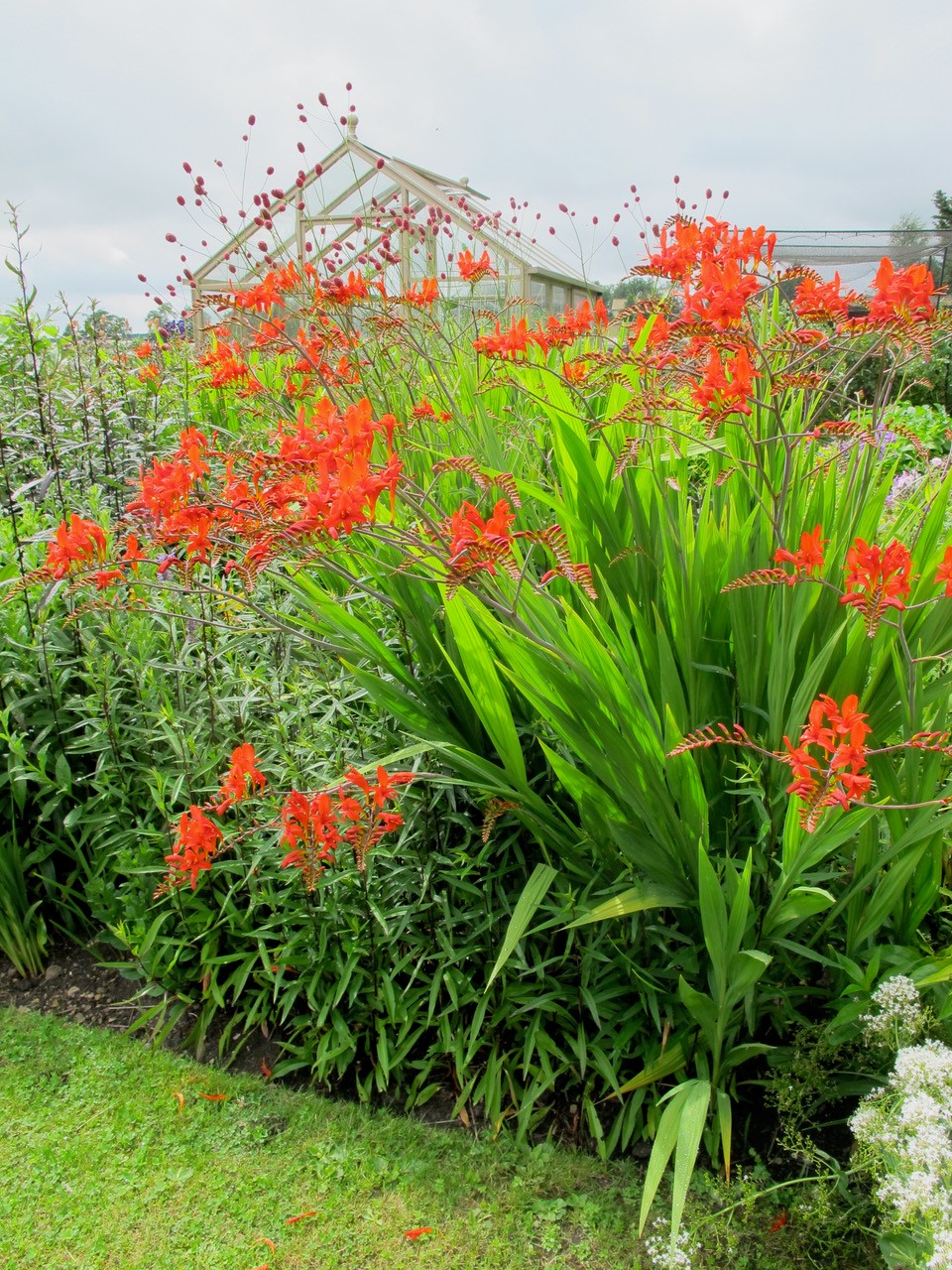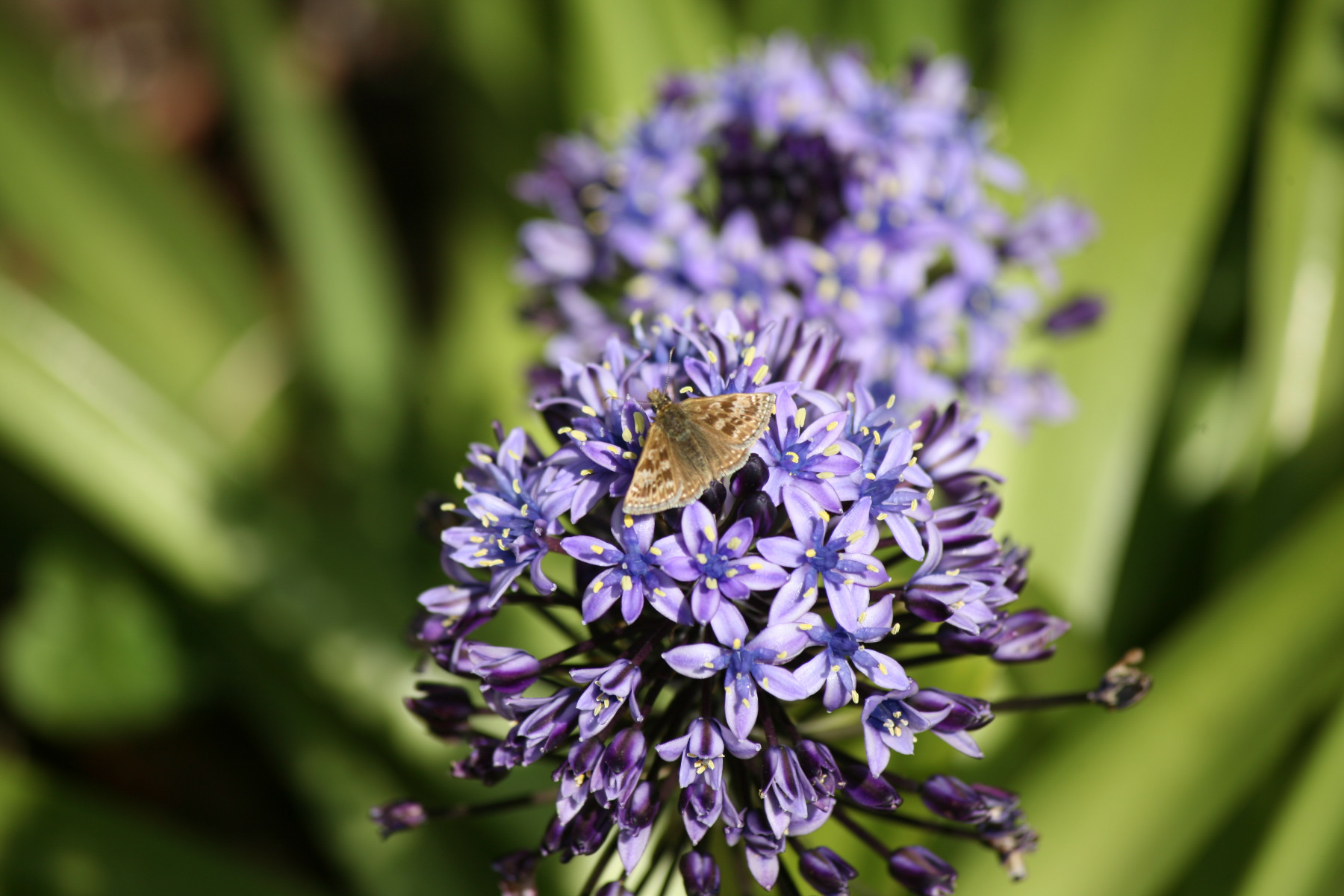
I think I’m enormously lucky to be in the world of plants, because the people who grow them are always nurturing and kind. I made this discovery in my twenties when I joined the Hardy Plant Society – some forty odd years ago. They had a seed exchange ( and still do) and I wanted to get my free packets of seeds because I was a hard-pressed mum financially. I soon found out that the seeds on offer included plants you couldn’t get from seed companies. However the biggest bonus was making like-minded friends at plant sales and garden visits. ( www.hardy-plant.org.uk )
I’m proud to say that I’m now an Ambassador for The Hardy Plant Society. Recently I met a fellow HPS member who had just bought Scilla peruviana, a showy bulb I grow under my study window. This April-flowering scilla has a huge cone of flowers that are very attractive to bees. Whilst chatting I found myself telling this gentleman that it had been wrongly named by Linnaeus in 1753.
Carl Linneaus was responsible for our binomial system of two Latin names. The first or generic name sometimes honoured a botanist colleague of Linneaus such as the Swedish Andreas Dahl (1751–1789 ) immortalised as the dahlia, although he almost certainly never saw a real one. The second Latin name, the species name, often described some aspect of the plant, or where it came from. Linnaeus had students and colleagues who collected plants for him, so his knowledge of the world’s flora may have been limited, although he lived a lot longer than most plant hunters. When this scilla arrived the notes said that it had arrived on a ship named The Peru. Linnaeus thought it had come from Peru so it was duly named peruviensis.
Linnaeus based his name on an earlier name given by Carolus Clusius, Hyacinthus stellatus peruanus, so it was probably Clusius, responsible for introducing the tulip into the Netherlands, who made the original mistake. That’s how a western Mediterranean bulb known as the Portuguese squill was attributed to the wrong country.
Once a plant has been named it has to be adhered to even if it is completely erroneous, unless some new evidence from DNA or something similar occurs. This is why some continental plants that we’ve known by simple names like Sedum ‘Autumn Joy’ and Penstemon ‘Garnet’ have had to revert to their original names of ‘Herbstfreude’ and ‘Andenken an Friedrich Hahn’ respectively. Add in some overenthusiastic botanists, who constantly seem to look at fragments DNA, and you’ll find that an aster has been subdivided and shuffled into five different genera. Symphyotrichum now describes most North American asters, but not all of them, although many European asters have kept the name aster.
Good names that stand out from the pack are often difficult for plant breeders to think of. Alan Bloom, who helped found The Hardy Plant Society in 1957, agonised about naming his really special plants. He ran the famous Blooms of Bressingham nursery and he introduced most 200 plants into this country and bred another 120 plants on the Norfolk nursery. A lot of the plants were given the Bressingham prefix, to identify them as his, but when Alan had a showstopper he looked for a special name.
I knew him very well and loved him dearly. He once explained how Crocosmia ‘Lucifer’ got its name. As some of you may know Alan was also the steam railway enthusiast. A lot of his engines and vintage cars and lorries appeared in Dad’s Army. The first time I met him, he took me on a steam train to show me the nursery. He was then 87 years old and his long white hair and trademark hooped earrings were highly unusual in the mid-1990s. Alan always worked on the railway at the weekends and there were several volunteers who would join him.
One was a schoolteacher, so when Alan was stumped for a name he asked his learned colleague to come up with one. As all ex-teachers know, Sunday evenings are spent marking books. As the pipe-smoking schoolteacher began to look at his pile, almost certainly with a sinking heart, he picked up his box of matches branded with the name Lucifer. It was a Eureka moment and Crocosmia ‘Lucifer’ was born.
Alan rated it one of his best plants, although he didn’t start breeding crocosmias until after the savage winter of 1963, because he thought they were too tender to bother with. East Anglian winters were hard in his day and Alan was a champion fen skater in his youth. He once showed me his skates and reminisced. The hard winter of 1963 to 1964 ( which gave me 4 weeks off school) saw the ground freeze to a foot deep. To his amazement some of his crocosmias survived and that prompted a round of plant breeding because they were hardy beyond a doubt.

His perennial plant breeder was named Percy Piper and there’s greenish yellow kniphofia named after him. Percy didn’t keep many notes but he knew what he was doing when he ‘fiddled’ as they both called it. Alan’s staff always called him Mr Bloom and, as soon as it started speaking to them, he would slip into a Norfolk drawl.
Bressingham’s alpine plant breeder was Laurence Flatman and he has a small hardy geranium named after him. Alan also named some herbaceous phloxes after his staff as they include ‘Bill Green’ and ‘Eva Cullum’. He also name some of his plants after his children and Robert, Anthea, Bridget and Jenny Bloom all exist as plants. Alan, Percy and Laurence got together once a week for a coffee and I would love to have been a fly on the wall.
Bressingham still lives on, although Alan Herbert Vauser Bloom passed away in 2005, aged 98 years. His Dell Garden is still one of the best places to see herbaceous plants in sweeping island beds. Many of these plants are not as readily available as they were, because nurseries are melting away like the glaciers. Everything is labelled and the garden is cared for by his son-in-law Jaime Blake and what a job he does.
I recently acquired a September-flowering kniphofia that Jaime had named. I originally saw it on the Red Hot Poker trial at RHS Wisley ( 2007- 2009) which I helped judge. The slender orange red flowers were given the name ‘Penny Rockets’. I was lucky enough to buy this by mail order from Bressingham Plants. I was completely impressed by the quality of this and the other paper I bought, ‘Elvira’. Substantial big plants at reasonable prices.
One of my last memories of Alan is in the potting shed because in his late 80s and early 90s he propagated plants for his grandson Jason Bloom, son of Adrian. I can still picture him sitting and half leaning against a stool in his shed. Jason is growing plants for the nursery and, if you ask me, he’s a chip off the old block. Look for the Plant Shop at www.thebressinghamgardens.com
If I hadn’t been into plants I would never have met Alan and spent those happy evenings munching Cadbury’s milk chocolate while his favourite composer, Schubert, played in the background. In winter there’d be a log fire burning and in summer we would sit on the seat in the garden and talk plants for hours and hours! Thank you plants.



